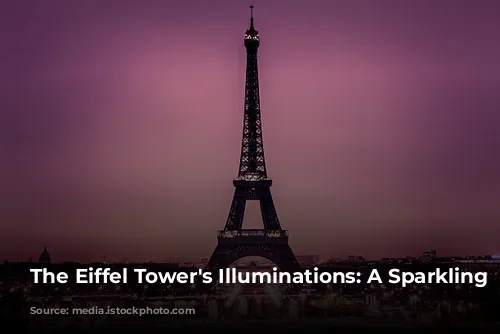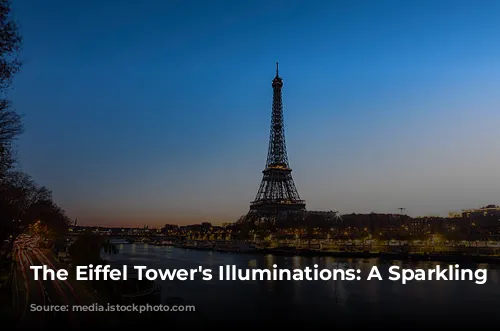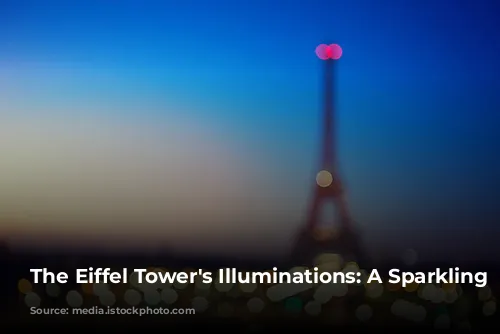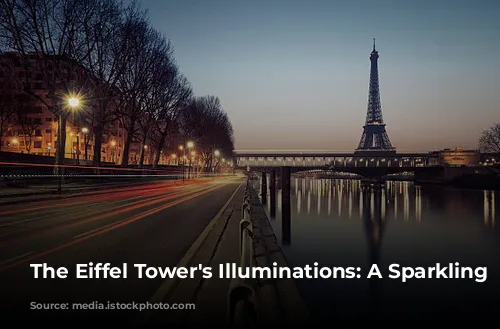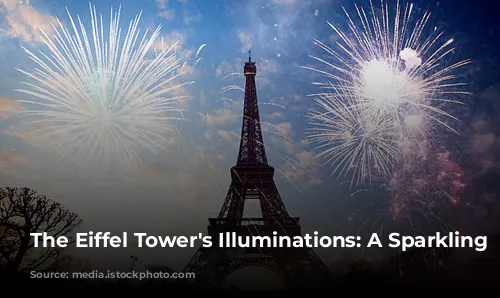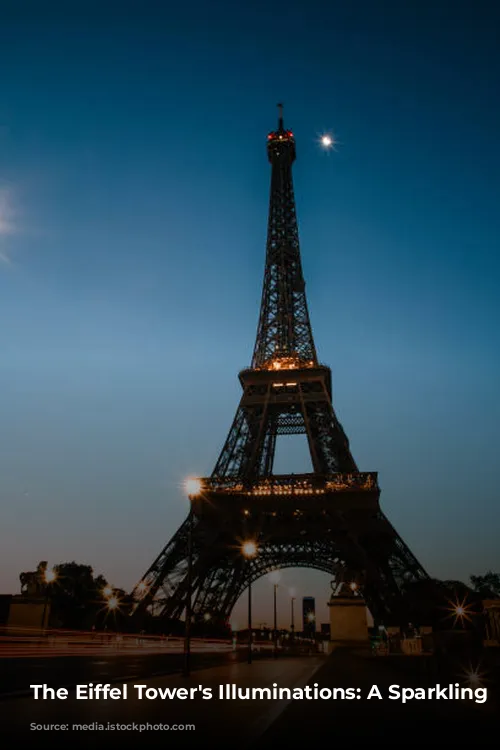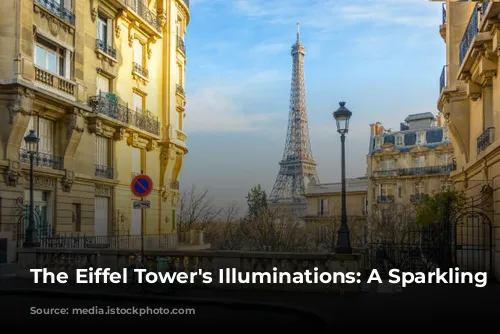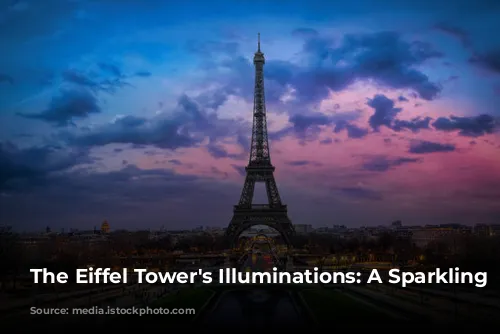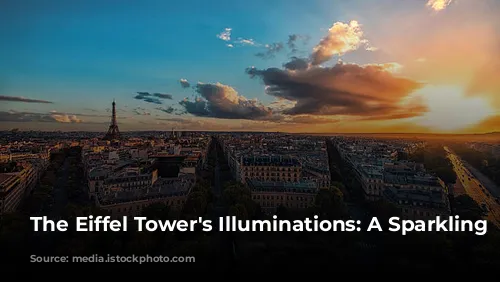The Eiffel Tower, a symbol of Paris and France, is even more captivating at night, when its metallic structure transforms into a dazzling spectacle of light. Join us as we journey through the history of the Iron Lady’s illuminations, uncovering the secrets behind its sparkling magic.
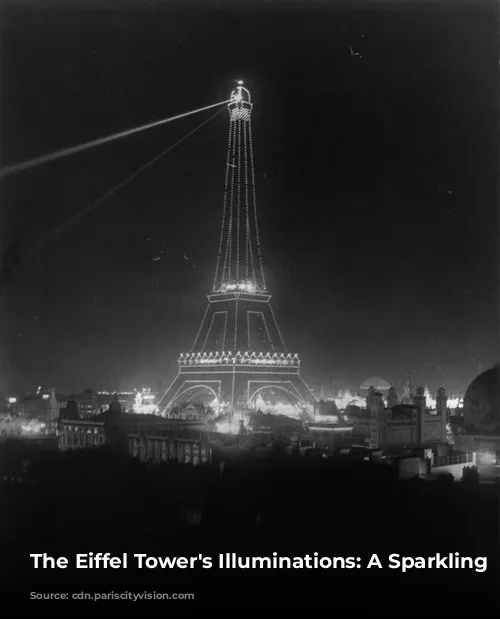
The Eiffel Tower Lights: A Constant Shine
The Eiffel Tower, a must-see attraction, is illuminated every night. Each evening, from sunset until 1 AM, its iron framework glows, creating a beautiful silhouette against the Parisian sky. During the summer months, the lights stay on an hour later, until 2 AM, giving visitors even more time to enjoy the spectacle.
Beyond the constant illumination, the Eiffel Tower dazzles with its renowned light show. For five minutes every hour, the tower twinkles, casting a golden glow over the city. This breathtaking display can be witnessed from numerous vantage points, creating an unforgettable memory.
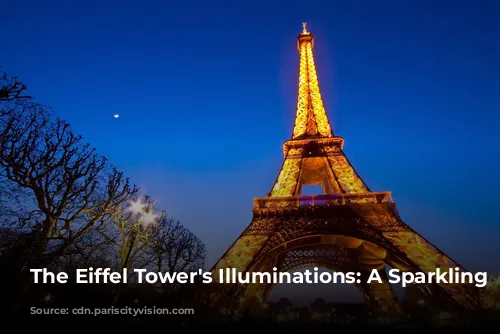
A History of Light: From Gaslights to Fireworks
The Eiffel Tower’s illumination has evolved significantly since its inauguration in 1889. From humble gaslights to elaborate projections, the Tower has been transformed into a canvas of light throughout its history.
The Beginnings of Illumination
The idea to illuminate the Eiffel Tower was born during the 1889 World’s Fair. Gaslights placed inside opalescent glass globes provided the first nighttime illumination, while a rotating lighthouse projected the colors of the French flag. The Universal Exhibition of 1900 marked a technological advancement, with 5,000 light bulbs replacing the gaslights, creating a brighter and more consistent illumination.
The Eiffel Tower’s Lights in the 20s and 30s
The 1920s and 1930s saw the Eiffel Tower become a canvas for advertising and innovative light displays. The Citroen Group, in 1925, used the Tower to showcase their brand name, illuminating three of its facades with 250,000 multicolored lamps, visible for miles.
In 1933, a 15-meter clock with colored minute and second hands was installed on the Tower, providing an eye-catching spectacle. The costly project was ultimately abandoned in 1936.
The 1937 World’s Fair brought a spectacular light show designed by André Granet, featuring a massive chandelier, kilometers of fluorescent tubes, and powerful spotlights. The Tower’s facade was illuminated with white light, while its edges glowed in gold, red, and blue.
The Eiffel Tower’s Lights in the 70s
The Eiffel Tower has continued to captivate with unique light displays throughout the years. During Christmas 1978, the Tower was transformed into a gigantic, luminous Christmas tree, spreading holiday cheer throughout Paris.
The Eiffel Tower’s Lights in the 2000s
The turn of the millennium was marked by a spectacular light show that attracted global attention. In 1997, a neon countdown clock was installed to mark the approach of the year 2000. At midnight on January 1st, 2000, the Tower burst into a dazzling display of fireworks and lights. The following year, the Tower glowed blue, celebrating the start of the new millennium.
The Eiffel Tower has continued to host memorable light shows since the millennium. In 2004, the Tower was illuminated red for the Chinese New Year. In 2006, the Tower was lit up in blue for the Europe Festival. And in 2007, the Tower celebrated the Rugby World Cup with green lighting, a rugby goalpost, and an enormous rugby ball.
The Eiffel Tower’s illuminations have also served as a platform for social and political causes. In 2007, the lights were turned off in support of “A Five-Minute Break for the Planet”. In 2014, the Tower was lit up in pink to raise awareness for breast cancer.
The Eiffel Tower: A Sparkling Symbol
The Eiffel Tower’s illuminations are a testament to its evolution and adaptability. The tower’s lights have become a cultural symbol of Paris and France, reflecting both technological advancements and social awareness.
Whether you’re gazing from the Trocadero, cruising along the Seine, or climbing the Montparnasse Tower, the Eiffel Tower’s nightly spectacle is a must-see. So, plan your visit to Paris, and experience the magic of the Eiffel Tower’s lights for yourself!

